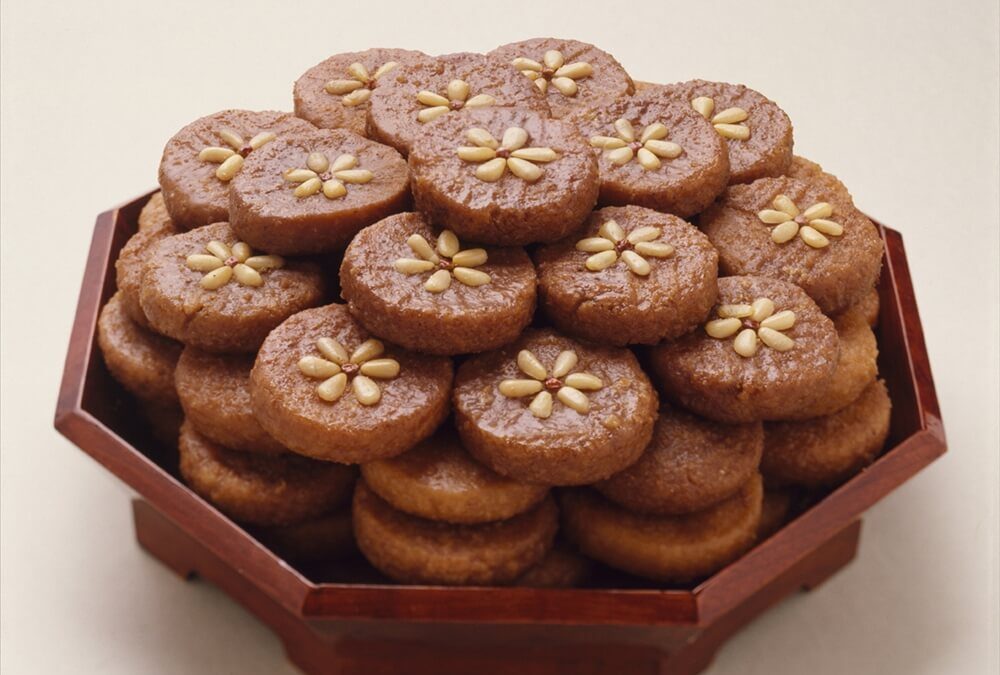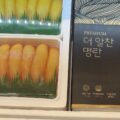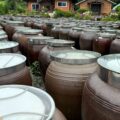Yakgwa: Korea’s Timeless Honey Cookie

Golden, fragrant, and beautifully chewy, Yakgwa (약과) is one of Korea’s most iconic traditional desserts.
Made from wheat flour, sesame oil, and honey, this delicate cookie has graced royal tables, temple offerings, and festive family gatherings for over a thousand years.
Its name literally means “medicinal sweet” — from yak (medicine) and gwa (confection) — reflecting Korea’s ancient belief that food and healing are deeply connected.
The Ancient Origins of Yakgwa
The history of yakgwa dates back to the Unified Silla period (7th–10th century), when honey was a rare and sacred ingredient in Korea.
Used in both Buddhist temples and royal households, honey symbolized purity, vitality, and divine blessing.
Monks and aristocrats prepared yakgwa as ritual offerings to the Buddha, believing it to have restorative powers for the body and soul.
During the Goryeo dynasty (918–1392), yakgwa became a dessert of celebration and refinement. It was served at Buddhist festivals, weddings, and ancestral rites (jesa), often as a symbol of gratitude and devotion.
By the Joseon dynasty (1392–1897), it had earned a place in royal cuisine, offered to kings, scholars, and foreign envoys as a mark of Korean hospitality and sophistication.
Today, yakgwa remains a symbol of tradition and respect, often enjoyed during major holidays such as Chuseok (Korean Thanksgiving) and Seollal (Lunar New Year).
Yakgwa Ingredients: Simple Yet Sacred
What makes yakgwa so special is its perfect simplicity. Only a few ingredients are used, but each carries centuries of meaning:
¤ Wheat flour – for structure and softness
¤ Sesame oil – for nutty aroma and longevity
¤ Honey – the heart of the recipe, symbolizing health and purity
¤ Rice wine (cheongju) or ginger juice – for fragrance and warmth
¤ Honey or rice syrup (jocheong) – to glaze and sweeten
Together, these ingredients embody the balance of flavor and philosophy found in Korean traditional cuisine.
How Yakgwa Is Made: The Traditional Method
Making yakgwa is an art that rewards patience and precision.
¤ Mixing the dough: Combine wheat flour, sesame oil, and honey to create a smooth, elastic dough.
¤ Shaping: Roll out the dough and press it into floral molds, often inspired by the lotus flower — a Buddhist symbol of purity.
¤ Frying: Gently fry the cookies in warm oil until golden brown.
¤ Soaking: Dip the freshly fried yakgwa in a honey-ginger syrup to infuse it with sweetness and aroma.
¤ Resting: Let the cookies rest so the syrup penetrates deeply, giving yakgwa its signature chewy, melt-in-the-mouth texture.
The result is a cookie that’s sweet but balanced, delicate yet rich, with layers of flavor that tell the story of Korea’s culinary past.
Yakgwa in Modern Korea
Once reserved for the royal court and temple rituals, yakgwa is now a beloved everyday dessert.
You can find it in bakeries, teahouses, traditional markets, and even modern dessert cafés across Seoul and beyond.
Contemporary Korean chefs are also reinventing it:
¤ Green tea yakgwa with matcha glaze,
¤ Citrus yakgwa with yuzu or lemon zest,
¤ Cream-filled yakgwa sandwiches,
¤ Or even yakgwa ice cream for a trendy twist.
These creative versions keep the ancient dessert alive in today’s culinary landscape — proof that yakgwa is timeless, versatile, and uniquely Korean.
Cultural Meaning and Symbolism
Beyond its sweetness, yakgwa carries deep cultural symbolism.
Its flower shape represents harmony and renewal, while honey symbolizes prosperity, healing, and love.
To share yakgwa is to share good fortune — which is why it’s often gifted during holidays, weddings, or ancestral ceremonies.



